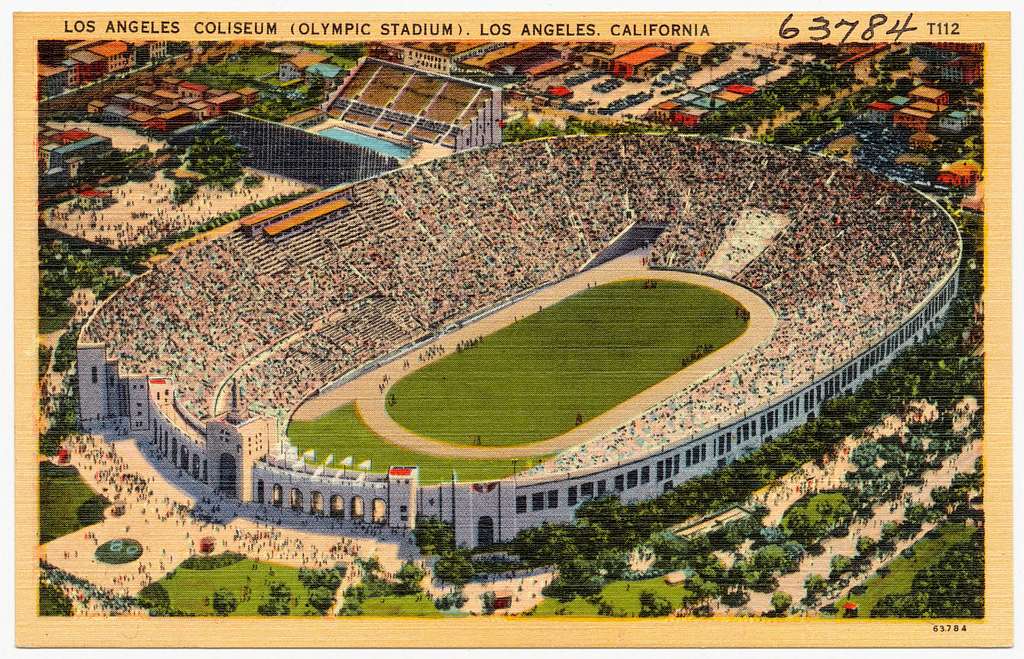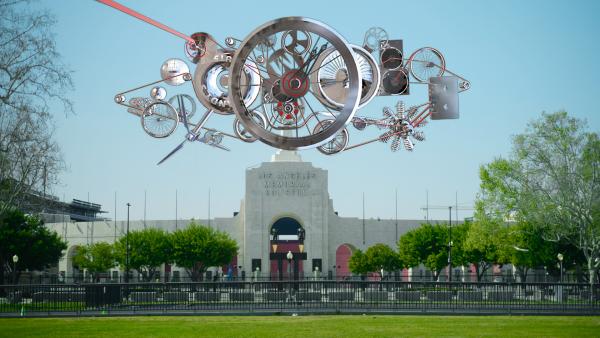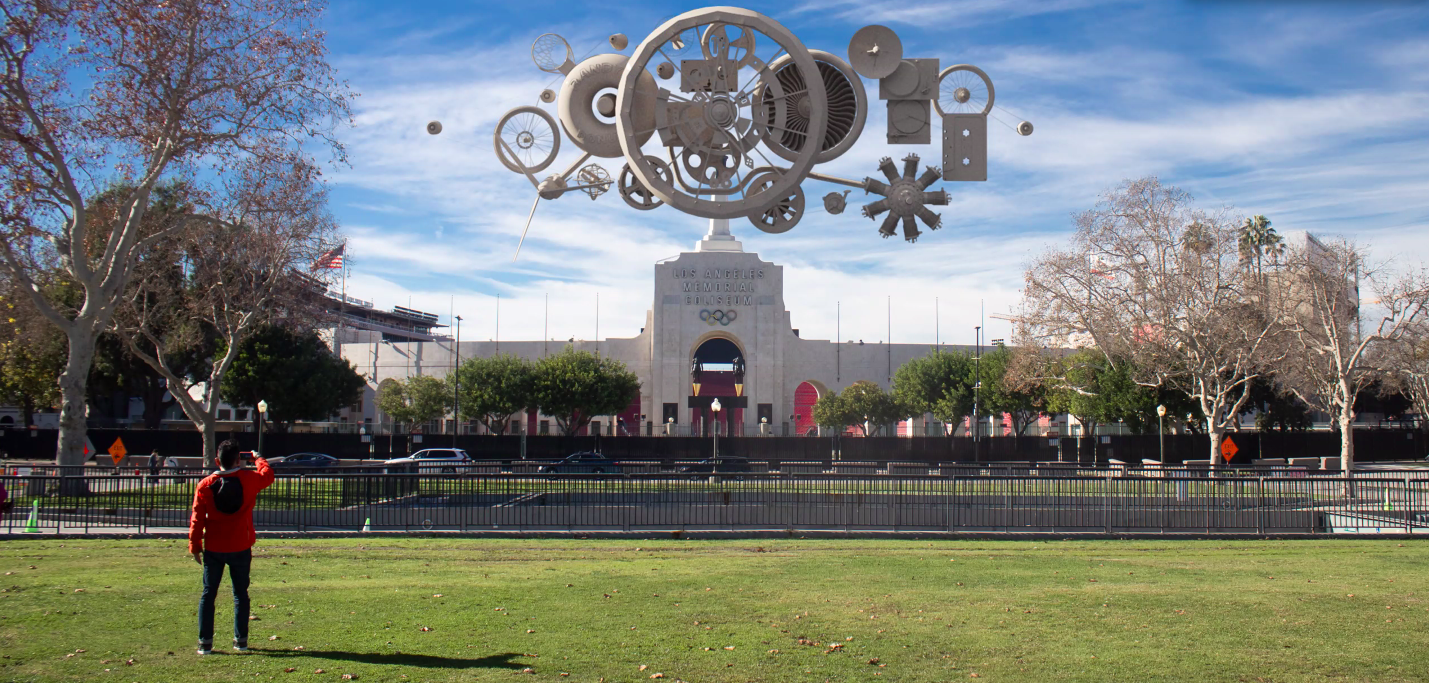LACMA × Snapchat: Monumental Perspectives is a multi-year initiative that brings together celebrated artists and leading technologists to create augmented reality monuments exploring histories of Los Angeles communities. In consultation with community leaders and historians, the initiative’s third and final collection of artists, Victoria Fu, Yassi Mazandi, Rashaad Newsome, Rubén Ortiz Torres, and Alison Saar, have used the lens of collective ancestral memory to examine the individual and communal legacies we leave today and have created works designed to be experienced at locations across Los Angeles with Snapchat’s camera.
We're also revisiting work by previous Monumental Perspectives collections. Below, learn more about Glenn Kaino's monument No Finish Line from Collection I.
Artist Glenn Kaino is a native Angeleno who makes work about the reconciliation of conflicting ideologies, opposing systems, and strict dichotomies in material and experiential ways. Kaino’s augmented reality lens, No Finish Line, centers generational stories from communities, businesses, and organizations along the 1932 L.A. Olympic marathon route, which started and ended at the Los Angeles Memorial Coliseum. This project highlights how stories of daily life coalesce to make history. A narrative thread connects generations of individuals and entities along the route. The symbolism of a marathon reminds the viewer that the path of history is long, and that creating positive change and building equitable worlds require stamina. In 2028, Los Angeles will become the only city in the United States to host the Olympic Games three times, invoking memories of Games past and contributing new narratives to the future. The memories of the people and places become perpetual and are not forgotten; the path of history is a marathon with no finish line.

While researching his monument, Kaino learned that the marathon race during the 1932 Summer Olympics in Los Angeles was the first time competitors ran a course on the streets of the city, beginning and ending at the Los Angeles Memorial Coliseum. Inspired by the spirit of these athletes, Kaino’s dedication to the marathon as a concept is a working example of patience and belief, understanding that good things take time.
No Finish Line connects the stories of our past and present in a format of the future, connecting technology and art in service of culture and community. The 1932 Olympic marathon was one of the first major events that led to the recognition of the city of Inglewood as the “City of Champions.” If we move forward almost 100 years through numerous evolutions of community and class, we encounter countless tragedies and lives lost. No Finish Line is an homage to the unsung efforts of everyone, including artists and creators, who have dedicated their lives to advancing the cause of the marginalized and underrepresented through authentic narratives borne from challenging realities and elevated into culture. The lens is a symbolic reminder that the job is never finished, and the race never won.
Kaino’s lens completion was accompanied by an art kit, built to serve the children in the communities which surrounded his chosen site, the Los Angeles Memorial Coliseum in Exposition Park. “Communities of color rarely, if ever, have a chance to participate in the making of their own monuments or the telling of their own stories.” These kits were created out of boxes perforated with the designs Kaino used in his lens.
With these kits, young people around the neighborhoods had the opportunity to create cardboard versions of clockwork gears, transforming the virtual into the physical, making the ephemeral tangible, and creating new memories. In the “exploded” clock of Kaino’s AR lens, the inner mechanisms of the timepiece are exposed, focusing on the pieces needed to make it function, an allegory of the individual communities and civilians who comprise the greater whole of Los Angeles, working together to make the city what it is.
No Finish Line incorporates stories and ideas from the past and the present into a large-scale augmented reality environment that spans a cross-section of Los Angeles. In this way, we can become aware of the histories hidden inside our streets that, if recognized, allow us to see ourselves and the rich histories we are a part of in new and inspiring ways. They are created from the stories of Los Angeles, passed down from multiple generations through memories and physical artifacts to remind us that time never stops, the race to make change is unending, and despite obstacles and defeat, there is no finish line as we strive to improve our city and its spaces.




